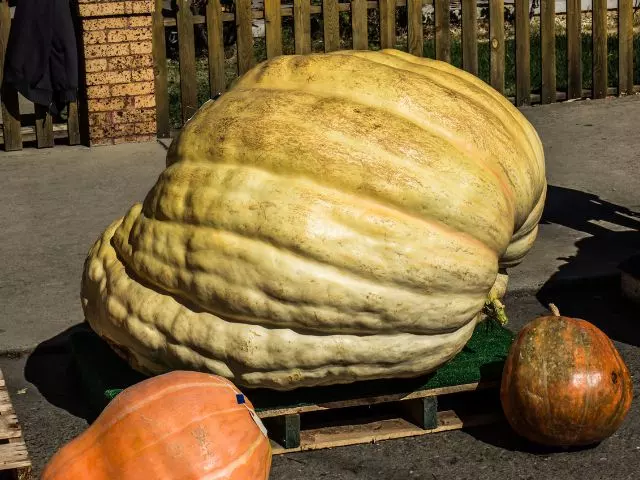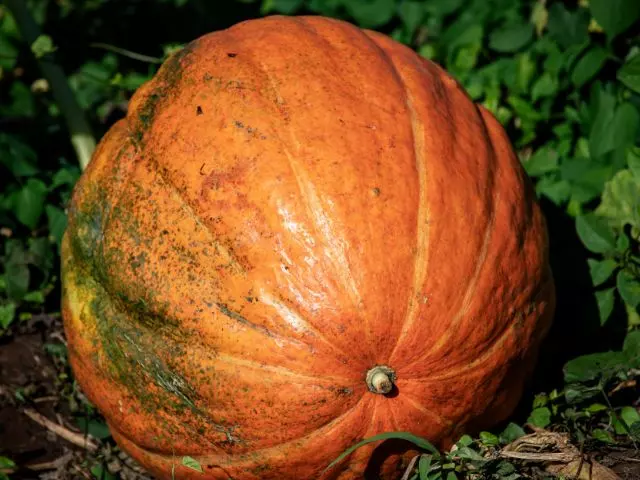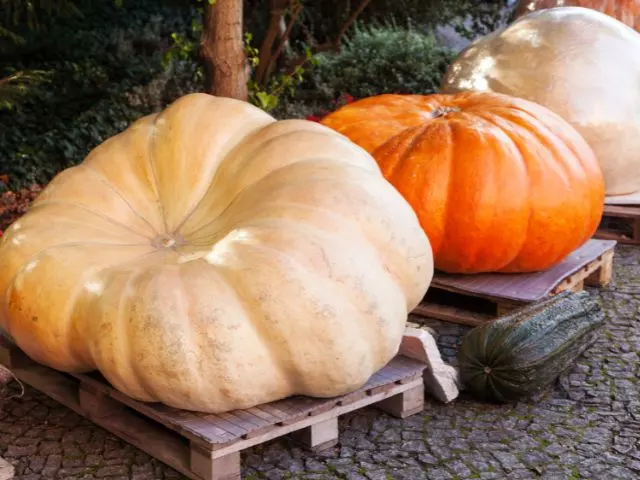The first time I saw giant pumpkins was at the Illinois State Fair when I was a kid. I was in awe of those giant pumpkins. Over the years, I have grown giant pumpkins of different species and had good results. There is a myth about giant pumpkins and feeding them with milk. Does it really work? In this article, I will explain how to grow giant pumpkins with milk and give scientific details of milk as a fertilizer.
Table of Contents
Growing Giant Pumpkins with Milk
Throughout my life, I attended different state fairs where I observed many giant pumpkins and was fortunate to be able to talk to the farmers of these pumpkins. Many of these farmers grow the Big Max and Atlantic Giant varieties. Each of these farmers has their tips for getting the most giant pumpkins. One of these tips is to grow giant pumpkins with milk.
Milk has many minerals and nutrients. Giant pumpkins, like all plants, need calcium to grow and develop properly, and milk provides calcium in large quantities. According to the University of Nebraska, milk also provides nitrogen, phosphorus, potassium, and sulfur in abundant amounts.
When I talked to several of these farmers at the state fairs, I could say that 50% of them told me that they used milk on their giant pumpkins. Milk on plants has many nutritional benefits, and different studies have shown that it is a good fungicide. Still, you should not apply pure milk directly to the soil.
In the next paragraph, I will explain the pros and cons of using milk in giant pumpkins as fertilizer. Continue reading to learn how to grow giant pumpkins with milk.
How To Grow Giant Pumpkins with Milk
Let’s see step-by-step how to grow giant pumpkins with milk. First, choose a pumpkin variety known for producing large pumpkins. Varieties like Atlantic Giant, Big Max, or Prizewinner are popular choices for giant pumpkins. Use quality giant pumpkin seeds to ensure a higher germination rate.
Secondly, choose the best soil for growing those pumpkins. Giant pumpkins require well-draining, nutrient-rich soil. Prepare the soil by tilling it to a depth of at least 12 inches (30 cm) and adding compost or well-rotted manure to improve soil fertility. The ideal pH for growing giant pumpkins is between 6 and 6.8. Measure soil pH before growing your giant pumpkins.
If you need to raise the pH of your soil, use lime to raise it. On the other hand, if your soil pH is too high, use sulfur, iron sulfate, or aluminum sulfate to lower the soil pH. It is essential to have the necessary pH in the soil so that the giant pumpkin plant can absorb nutrients and minerals correctly.
Then, choose a bright location in your garden that gets a minimum of 6-8 hours of direct sunlight daily. Then, plant giant pumpkin seeds directly in the ground when the soil temperature reaches at least 70°F (21°C). Plant the seeds about 1 inch (2.5 cm) deep, with a spacing of 5-6 feet (1.5 to 1.8 m) between each seed.
You can also sow the seeds of giant pumpkins two to four weeks before the last frost, depending on the region you live in. I recommend using biodegradable pots for easier transplanting.
Keep the soil consistently moist but not soggy. Water deeply when the soil surface starts to dry out, especially during dry spells. I recommend reading our article about how often to water pumpkins.
As the pumpkin plants grow, you may need to prune and thin them to encourage one or two of the healthiest pumpkins to develop. Remove more miniature, weaker pumpkins to divert more nutrients and energy to the chosen ones.

Feeding Milk to Your Giant Pumpkins
Finally, it is time to feed those giant pumpkins with milk when growing. When the pumpkins are the size of a grapefruit, it is time to start feeding them with milk. There are two ways to feed your giant pumpkins with milk. I will explain the two ways to grow giant pumpkins with milk, but one is my favorite.
First Method for Feeding Giant Pumpkins with Milk
This is a traditional method to grow giant pumpkins with milk. Still, I do not recommend it because when cutting the vine, pests and diseases could appear in the pumpkin. I would instead use the second method to avoid pests and diseases while growing pumpkins.
Utilize a sealed container such as a milk jug or Mason jar. Then, please choose a suitable wicking material, whether an actual wick or a cotton fabric, capable of absorbing the milk and directing it into the pumpkin stem. Create an opening in the container’s lid that matches the width of the chosen wicking material.
Fill the container with milk and thread the wick through the hole. With a sharp knife, make a shallow incision on the underside of the selected pumpkin vine. With great care and gentleness, insert the milk-containing wick into the incision. Secure the incision by wrapping it with gauze to keep the wick in position.
Second Method for Feeding Giant Pumpkins with Milk
This is my favorite method to grow giant pumpkins with milk because it is not necessary to do anything to the pumpkin vine, and this way, I avoid many problems, such as pests and diseases.
Mix milk and water in a 1:1 ratio, for example, one gallon of milk to one gallon of water. Then, water with this mixture around the base of the plant. You can repeat every two weeks during the growing season. Whole or 2% milk is a suitable option.

Does Milk Make Pumpkins Grow Bigger?
Your pumpkins should grow bigger when using milk as fertilizer. As I mentioned earlier, milk has many nutrients, vitamins, and minerals that will help the pumpkin fruits to develop properly. Use milk in your pumpkins in the proportions indicated in the previous paragraphs.
Final Conclusions
Milk brings many minerals and nutrients to pumpkins, but it must be applied correctly to get the desired effects. As mentioned above, many gardeners use milk for their plants and giant pumpkins.
The last record for the world’s most giant pumpkin was set in 2021 with a 1226 kilogram (2702 lbs.) pumpkin from a farmer in Italy. You can read more about this record here, at the Guinness World Records.
Be sure to follow the directions mentioned in this article to apply the milk to your giant pumpkins correctly. I hope you find this article useful and have a successful harvest.



